New Media, Rewired
Forming part of a recent media studies tendency to analyse the impact media have in representing, and therefore also producing, the same histories they exist within as 'denizens', Lisa Gitelman's Always Already New: Media, History, and the Data of Culture presents some media historical 'remediations' of its own. Reviewed by Jussi Parikka
Historically and temporally geared analysis is getting the attention it deserves in media studies and theory. Various recent studies and collections have approached media and temporality from different angles, and all seem to emphasise the potentiality for new perspectives and creativity gained by digging into a past that is interfaced or short-circuited as part of a contemporary theory of media. Such an agenda of media history is not content merely to find precursors to contemporary media formations and technologies, but aims to break up the idea of linear history and emphasise its discontinuities á la Foucault. Walter Benjamin wrote about how different history might look from the viewpoint of losers, which has also lead media historians to look at the margins of mainstream history. A further source of inspiration is Siegfried Zielinski and his quest for an 'archaeology' whose task it is to create a new field of media questioning, or to write media history with the guideline: 'do not seek the old in the new, but find something new in the old.'[1]
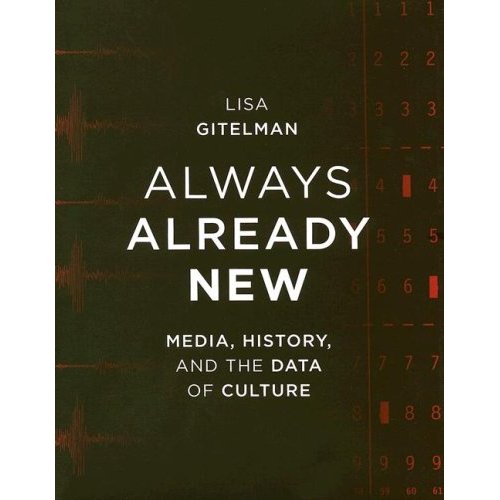 Image: Lisa Gitelman, Always Already New
Image: Lisa Gitelman, Always Already New
Lisa Gitelman’s Always Already New: Media, History, and the Data of Culture promises explicitly to address questions of time, history and media studies, taking media primarily as a historical topic. This agenda unfolds in two contexts: 'The Case of Phonographs', where the 19th century inscription of sounds is addressed alongside the socio-conceptual fields of 'recording', 'publics' and 'users'. This accentuates how old media was new back then (to use Carolyn Marvin’s notion); how the media technologies of recording and playing back sound rearticulated the social field, but were also conditioned by 'social meanings' attributed to the media technology. Alongside this we have 'The Question of the Web', which is interfaced as a doubling of the questions of the first section, and asks how media and its social field co-evolve and how questions of inscribability and inscriptiviness are intertwined with the political agenda of what 'can and should be inscribed.' (p.86). Whereas the phonograph produced a new mode of materialising and commodifying sound, digitisation and distributed networks, to paraphrase Gitelman, are supposedly doing the opposite and dematerialising the world into informational patterns. Yet, such a feeling of dematerialisation should be read primarily as an effect of material media technologies, Always Already New argues. Similarly also the Web, and network media in general, are made up of histories while they themselves rearticulate the basic ground (or data) on which history is explicated: documents, software and data organisation structures.
So, in terms of scope, Gitelman seems to cover a vast historical development, even though the attempt is not to write a linear history of media from phonograph to web but to use case examples to demonstrate the functions of the archive, or of archiving, as elemental to media discourses, old and new. 'Media are themselves denizens of the past' (p.5), but at the same time 'media are also historical because they are functionally integral to a sense of pastness.' (ibid.) Media remediate the past as representations in books, films and so on, but media seem also to impose boundaries on what can be said.
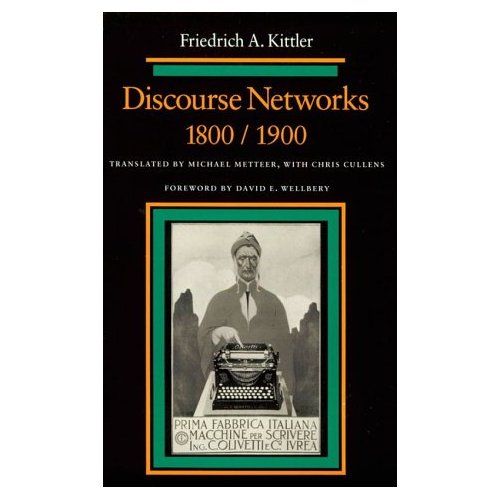 Image: Friedrich Kittler, Discourse Networks 1800/1900
Image: Friedrich Kittler, Discourse Networks 1800/1900
Media determine our situation, and discourse networks channel the phenomenological world we experience, suggested Friedrich Kittler, some time back in the 1980s. But Gitelman, despite the similarities in her take, wants to steer clear of any too straight-forward media materialism. Instead, Always Already New anchors itself in a more traditional cultural studies agenda where media are defined as 'socially realized structures of communication, where structures include both technological forms and their associated protocols, and where communication is a cultural practice, a ritualized collocation of different people on the same mental map, sharing or engaged with popular ontologies of representation.' (p.7). This all sounds quite familiar to anyone even faintly acquainted with last 30 years of (Raymond Williams style) cultural studies and cultural anthropology in the wake of Clifford Geertz.
More interesting than these theoretical points are Gitelman’s empirical excavations. The historical analysis is careful, well founded, with an impressive sense of how to handle sources. This is something still often lacking in historically inclined media theory. On these grounds, Gitelman contradicts e.g. Kittler’s valorisation of Thomas A. Edison’s key role in the invention of sound recordings. 'Edison’s phonograph' is not merely one inventor’s brainchild and Kittler neglects, according to Gitelman, the complex field of discursive battles that surrounded the invention; something that is articulated in the 'thousands of pages of existing documentation' for example (p.10).
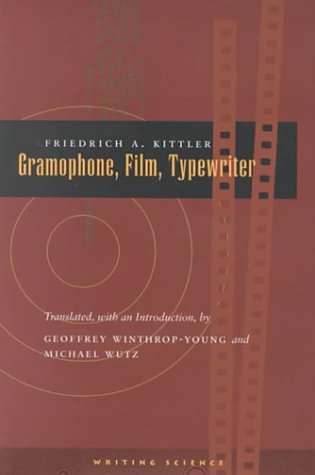 Image: Friedrich Kittler, Gramophone, Film, Typewriter
Image: Friedrich Kittler, Gramophone, Film, Typewriter
Interestingly, Gitelman suggests that media are always first anomalous, without a place and a proper seriality. They are without a place of their own, and defined always in relation to older media. The phonograph did not achieve discursive consistency as a recorder of noise and the vibrations of the real merely in Menlo Park laboratories but was articulated on a larger public field, serving also to rearticulate the existence of such a public. That is, the media technological potential defined the public (the socius), and the public defined the potentials of the phonograph in a coevolutionary loop.
In the second section of the book, a similar idea is transported into a more contemporary context. The Web and its early formulation in the 1960s are approached as technologies of time and cultural heritage. The new media of digital documents was largely articulated in terms of old media such as film, magnetic tapes and of course paper (just as early tinfoil and wax cylinder records from the end of the 19th century were 'saved' for the future historian in newsprint form). Gitelman observes the question of new media bodies (especially the materiality of digital texts) as an ontological and semantic problem, which media theorists have tried to pin down to such modes as 'platform, interface, data standards, file formats, operating systems, versions and distributions of code, patches, ports, and so forth.' (p.96). For Lev Manovich, new media bodies consist of numeric coding and modular organisation, whereas Mark Poster warns never to analyse media technologies in terms of their internal 'material' capabilities. Gitelman’s approach is to see how digital textual bodies are connected to nondigital texts, where she connects her analysis of the rise of digitalisation to the bibliometric crisis (i.e. an unmanageable production of publications caused by specialisation and increased research) experienced since the mid 20th century, expressed in various sources such as Vannevar Bush’s 'As We May Think' article from 1945.
The curious renegotiation of the materiality of the archive (in its broad sense) is further emphasised with the move from new media bodies to </body> in HTML tags. The HTML culture of the Internet era is defined by dynamic Web 'pages' and 'documents' that clearly transport new media back into the context of its paper format predecessors. Again, Gitelman insists on the question of what kind of networks of media we are dealing with or, in other words, where do the borders of HTML stretch to (as they tend to move far beyond their digital domain)? Gitelman addresses questions of how the archive is redefined as it stretches between the code elements, the audiovisual representations and the meanings inherited from previous media eras. Like the Web, and electronic documents in general, 'history always happens at the levels of, at least, data, metadata, program and platform” (p.147), writes Gitelman, meaning that the Web as a socio-technological field can be harnessed to question the ontology of media history itself. This of course opens up the interesting agenda of power and access to software/history: the phenomenological layer, whether we are talking about representations of history or more specifically something like DVDs are, putting it crudely, 'data' which is always controlled by the metadata that channel those representations. Following Gitelman’s DVD example, this metadata could mean visible metadata such as the menus and titles of a DVD, but also the coding of DVDs into six global regions (as part of the effort to control piracy). In terms of the production of history, this leads to the question of which socio-technical layer history is inscribed in and distributed through and how to access these modulations and hence the 'source code of historical writing'.
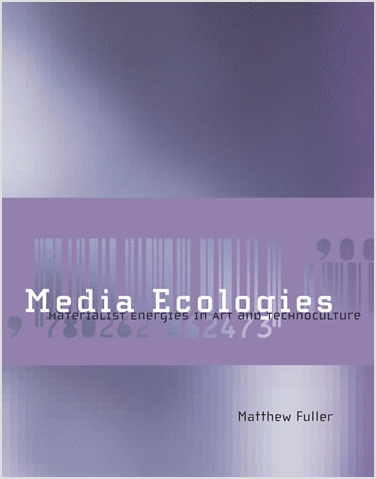 Image: Matthew Fuller, Media Ecologies
Image: Matthew Fuller, Media Ecologies
Gitelman does, then, approach some really important questions concerning the conceptual and material basis of media history and humanities. For Gitelman, media history offers the promise of contextualising the humanities' tools for thought in their historical being, whether we are talking about the history of art-historical slide collections, the practices of graduate seminars or the material instruments of writing and documenting. As Gitelman writes, media historical analysis is then in an excellent position to articulate implicit socio-technological contexts (which I would call non-discursive frames of the humanities). This is a kind of rearticulation of Bruno Latour’s way of seeing science as a set of laboratory practices which are intimately dependent on the networks of tools, technologies and actors of various scales. Latourian network analysis does fit in well with Gitelman’s analysis of new media bodies and </bodies>.
Always Already New grounds its argument in the continuous feedback of how socio-technological contexts form audiences or publics (and users), but also how these social forces define and place technologies into certain moulds. This double articulation, an attempt to see media history in terms of such non-linear dynamics, is one of the most interesting ideas of the book, and one wishes that the idea would have been developed theoretically further. It might offer fitting ways out of the impasse between the merely discursively orientated cultural studies style of media studies and the non-discursively orientated Kittlerian German agenda that Gitelman also criticises. Yet, even though the elements are there, and Always Already New brings forth crucial questions for media history, it does not take them to the theoretical level of discussion they deserve. The theoretical points are not taken as far as they should have been, and not discussed as thoroughly as hoped for. Gitelman’s special emphasis on social constructionism seems to take some of the power away from her more radical arguments, and the book does not develop or emphasise sufficiently the potentials of non-linear history.
Always Already New contextualises itself within media archaeology but does this too cursorily, referring only to Geert Lovink and his published e-mail conversation with Wolfgang Ernst. The media archaeological agenda cannot simply be reduced to the resistance of teleologies and narrative explanations, but also entails an understanding of the materiality of media and, amongst other things, non-linearity which could have helped Gitelman to underline her points. In this sense, work by the likes of Siegfried Zielinski, Erkki Huhtamo, Wolfgang Ernst and Thomas Elsaesser should have been discussed more thoroughly and also the critique of Kittler could have been posited more theoretically. Even though I agree that well founded and broad empirical analysis can bring in novel perspectives neglected by Kittler, such factual critique does not discuss Kittler’s original ideas. For example, with regards to Edison, I would be inclined to think that he is more of a conceptual focal point in the framing of the discourse network of 1900 ‒ comparable with how Kittler also uses the figure of Judge Paul Schreber as key paradigmatic 'individual' to illustrate the workings of discourse networks ‒ than an empirico-historical description of this particular inventor. Jonathan Crary has likewise articulated Edison as a key intersection, or a crystallisation of media historical trends.
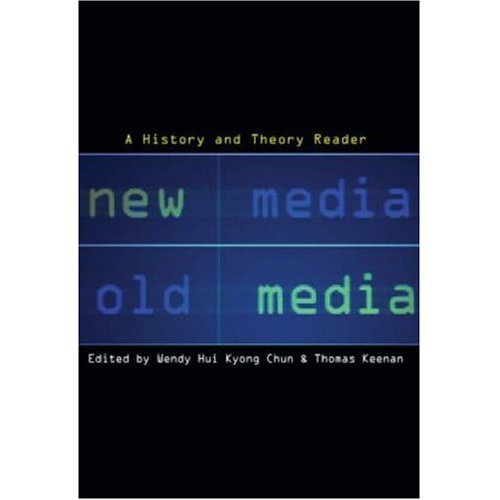 Image: Wendy Chun & Thomas Keenan, New Media, Old Media
Image: Wendy Chun & Thomas Keenan, New Media, Old Media
In other contexts, discussing Matthew Fuller’s notion of the 'medial will to power' (in Fuller’s Media Ecologies) might have helped to articulate a more affirmative sense of the power of the media apparatus as part of the social networks. This is the idea that technology transports with it forces and drives at the same time as it is composed of them. I would have also been interested in reading how Gitelman discusses Ernst’s notions of the 'metaphoricity of the archive in multi-media space' in Wendy Chun and Thomas Keenan’s Old Media, New Media (although due to the lengthy production times of big publishers, Gitelman might not have had the chance to see this before submitting her final version of the manuscript.) In general, except for a short contextualisation in the introduction, there is not too much discussion of other interesting theoretical approaches in similar fields.
Always Already New relies on the power of empirical sources, but could also have profited from stronger theoretical discussions. Perhaps a bit of creation of concepts would emphasise even more the potential this kind of analysis has not merely for the cultural history of media and technology but for media theory in general. The future remains there to be grasped, perhaps via historical detour, or a rewiring, but all the same, by taking more risks in conceptual work.
Footnotes
[1] Siegfried Zielinski, Deep Time of the Media. Toward an Archaeology of Hearing and Seeing by Technical Means, Cambridge, MA: The MIT Press, 2006, p.3.
Lisa Gitelman, Always Already New: Media, History, and the Data of Culture, Cambridge, MA: MIT Press, 2006
Jussi Parikka <juspar AT utu.fi>is a research scholar in the department of Cultural History, University of Turku, Finland. Personal homepage at users.utu.fi/juspar
Mute Books Orders
For Mute Books distribution contact Anagram Books
contact@anagrambooks.com
For online purchases visit anagrambooks.com






